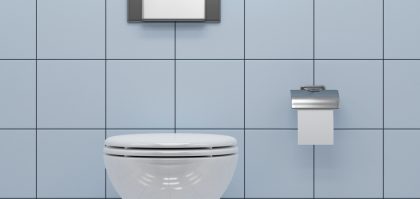
The Cable Beach Intercontinental Resort at Broome in Western Australia has a history of technology innovation in its approach to increasing guest satisfaction. The resort, which caters to a large variety of guests with accommodation for up to 600 people, was recognised as Australia’s leading resort in 1996.
An unusual problem
While Broome’s climate is glorious for the majority of the year and suits the resort’s beach club atmosphere, management faced an unusual problem with its outdoor Ocean Pool.

The pool is free form with a total area of around 405m2 and water volume of some 540m3. The pool was unheated and in winter could fall as low as 170C to 200C. In contrast, during the hot and humid summer period, the water temperature reached 35°C. Given air temperatures of 35°C or more and high humidity, the pool was far too warm for comfortable swimming.
The owner engaged Ove Arup Engineering Consultants from Sydney to investigate options for heating and cooling of the pool. Having used a thermal model to determine the hourly heating and cooling load of the pool, Ove Arup then examined various technology options.
Cooling the pool could only be achieved by a refrigeration process, whereas heating can be achieved by a number of alternatives including (1) a refrigeration process in a heat pump mode, extracting heat from the ambient air and transferring it into the pool water, (2) direct electric heating, (3) propane gas heating boilers, and (4) solar heating collectors.
Economic evaluation of the various options clearly favoured the use of an electric air-to-water heat pump. While heat pump technology is commonly used for resort pool heating, it can be designed for reverse cycle operation giving both water heating and cooling, much in the manner of a reverse cycle air conditioner.
For Cable Beach Resort, the economics for pool heating alone justified the use of heat pumps over propane gas and electric element. The operating costs of the heat pumps in heating mode was only some $2,000 per season more than a solar system with element or gas boosting, with the capital cost of both options being around $40,000. The heat pump approach provided the unique benefit of the dual capacity for heating or cooling.
Heat Recovery
The installation of the two Accent Models HWP50 (@50KW nominal capacity) provided the opportunity to tackle the ongoing operating cost of the resort laundry. Refrigerant gas desuperheaters were added to each compressor of the two HeatWaves.
The desuperheater captures the heat of the refrigeration circuit. Therefore, while the heat pumps are in either heating or cooling mode, heat is transferred to the hot water storage tanks serving the laundry. This heat recovery is free in the sense that there is no operating cost. While the Accent heat pumps are in cooling mode, there is no impact on their cooling output. When the heat pump is heating, there is a marginal reduction in output efficiency (this heat is not lost, but is transferred to the laundry hot water rather than the pool).
The value of the heat reclaim (which is preheating some 6,000 litres of water overnight to between 60°C to 63°C), equates to a reduction in gas heating costs for the laundry of some $5,000 per annum and almost fully covers the estimated cost of heat pump operation for pool heating and cooling.
Another unusual characteristic of the project is the installation of the pool heat pumps at the laundry, entailing a pipework run of around 170m to the pool. The heat pump connection to the pool water treatment system is insulated and placed underground.
Guest Response
The heat pump system was installed and commissioned by Accent prior to Easter 1997. Guest reaction to the “Cool Pool” was immediate and greatly increased utilisation and much direct positive feedback to Cable Beach management. The availability of the cool pool now provides a direct marketing advantage and means of differentiation for the resort that is highlighted in its advertising.
Accent Equipment Supply
Accent equipment supply included two * Accent Pool Heat Pump Models HWP50 (@50KW nominal capacity) fitted with heat recovery to each compressor, two * 3,000 litre hot water storage tanks, pumps, controls and site materials, including pipe and insulation. Design was undertaken jointly by Accent and Ove Arup.
FOR FURTHER INFORMATION:
Rheem Pool Heating Advisory 1300 132 950
info@rheempoolheating.com.au




